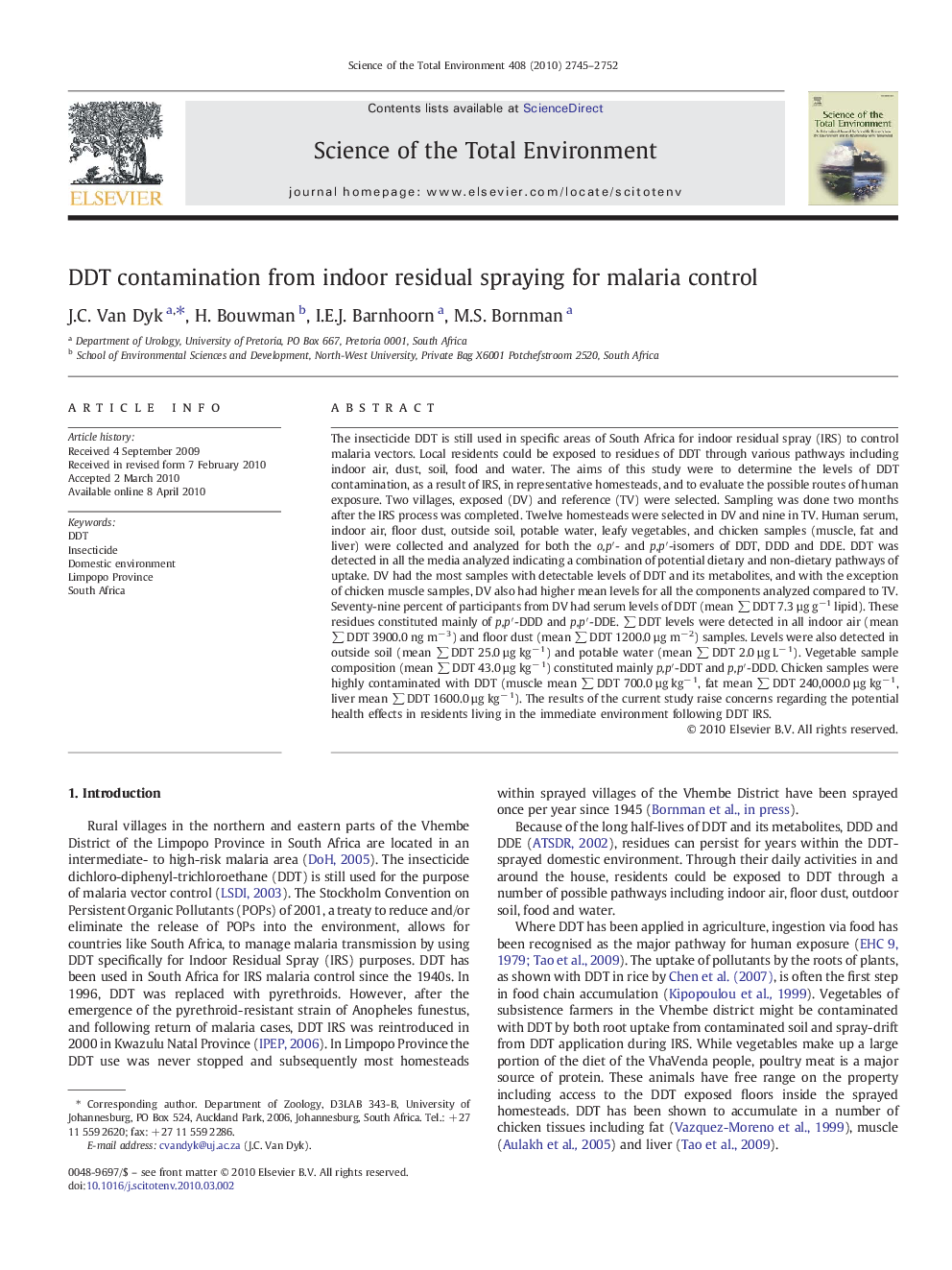| Article ID | Journal | Published Year | Pages | File Type |
|---|---|---|---|---|
| 4430677 | Science of The Total Environment | 2010 | 8 Pages |
The insecticide DDT is still used in specific areas of South Africa for indoor residual spray (IRS) to control malaria vectors. Local residents could be exposed to residues of DDT through various pathways including indoor air, dust, soil, food and water. The aims of this study were to determine the levels of DDT contamination, as a result of IRS, in representative homesteads, and to evaluate the possible routes of human exposure. Two villages, exposed (DV) and reference (TV) were selected. Sampling was done two months after the IRS process was completed. Twelve homesteads were selected in DV and nine in TV. Human serum, indoor air, floor dust, outside soil, potable water, leafy vegetables, and chicken samples (muscle, fat and liver) were collected and analyzed for both the o,p′- and p,p′-isomers of DDT, DDD and DDE. DDT was detected in all the media analyzed indicating a combination of potential dietary and non-dietary pathways of uptake. DV had the most samples with detectable levels of DDT and its metabolites, and with the exception of chicken muscle samples, DV also had higher mean levels for all the components analyzed compared to TV. Seventy-nine percent of participants from DV had serum levels of DDT (mean ∑ DDT 7.3 µg g−1 lipid). These residues constituted mainly of p,p′-DDD and p,p′-DDE. ∑ DDT levels were detected in all indoor air (mean ∑ DDT 3900.0 ng m− 3) and floor dust (mean ∑ DDT 1200.0 µg m− 2) samples. Levels were also detected in outside soil (mean ∑ DDT 25.0 µg kg− 1) and potable water (mean ∑ DDT 2.0 µg L− 1). Vegetable sample composition (mean ∑ DDT 43.0 µg kg− 1) constituted mainly p,p′-DDT and p,p′-DDD. Chicken samples were highly contaminated with DDT (muscle mean ∑ DDT 700.0 µg kg− 1, fat mean ∑ DDT 240,000.0 µg kg− 1, liver mean ∑ DDT 1600.0 µg kg− 1). The results of the current study raise concerns regarding the potential health effects in residents living in the immediate environment following DDT IRS.
